LEN RAWLE
THE PROFESSIONAL AMATEUR
& ORGANIST SUPREME
-oOo-
PAGE ELEVEN:
THE EMPRESS
THE WURLITZER THEATRE ORGAN OF
THE EMPIRE THEATRE LEICESTER SQUARE
AND ITS REMOVAL TO CHORLEYWOOD
-oOo-
THE EMPIRE LEICESTER SQUARE
THE SHOWCASE OF THE NATION
-oOo-
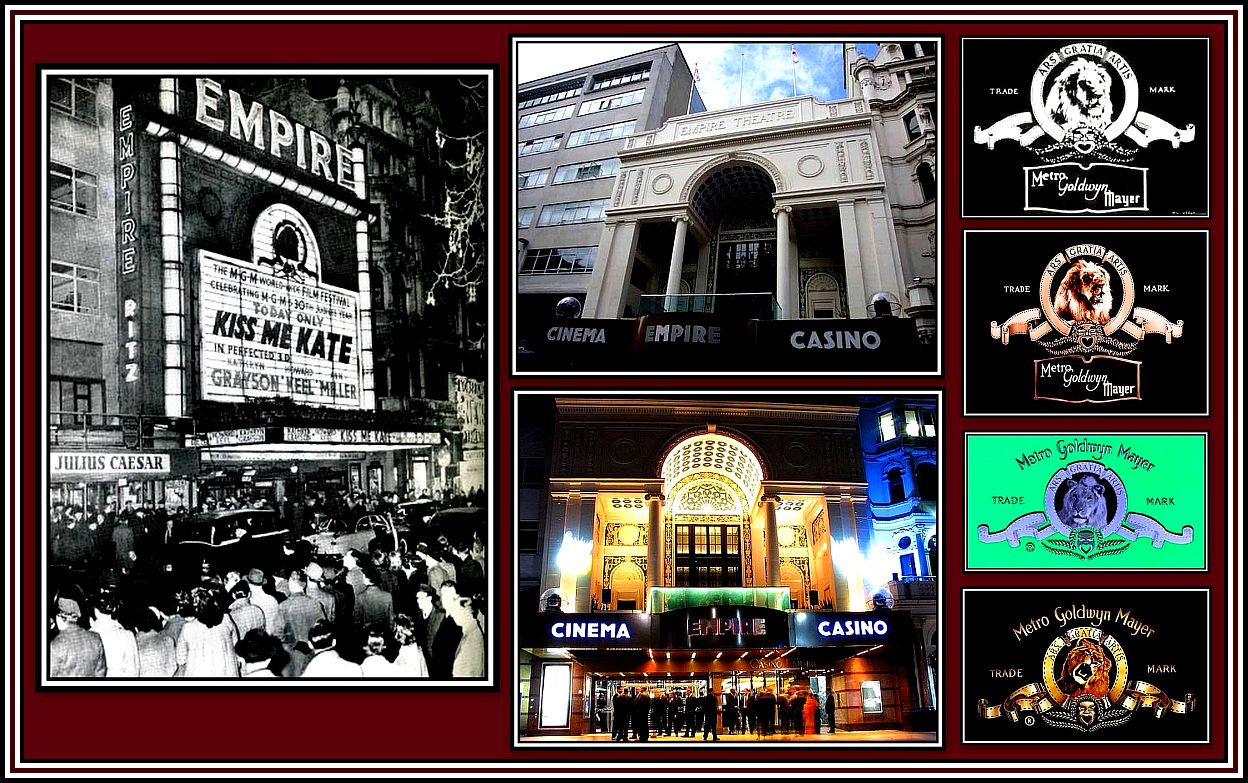 The Empire Theatre Leicester Square – advertised as the Showplace of the Nation – one-time Flagship Theatre of Metro-Goldwyn-Mayer (MGM) Pictures in the U.K.
The Empire Theatre Leicester Square – advertised as the Showplace of the Nation – one-time Flagship Theatre of Metro-Goldwyn-Mayer (MGM) Pictures in the U.K.
& home of Europe’s first 4-Manual and Largest Wurlitzer Theatre Organ
-oOo-
 Views of the Entrance Foyer of The Empire Theatre Leicester Square
Views of the Entrance Foyer of The Empire Theatre Leicester Square
showing the stairs up to The Circle and down to The Stalls
From the Tony Moss Archive from the Cinema Organ Society
 The Bar
The Bar
From the Tony Moss Archive from the Cinema Organ Society
-oOo-
 The Empire Theatre Leicester Square in 1959 just prior to the opening of Ben-Hur
The Empire Theatre Leicester Square in 1959 just prior to the opening of Ben-Hur
-oOo-
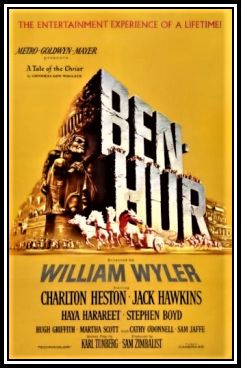
In 1961, following the seventy-six week run of Ben-Hur at the Empire Theatre Leicester Square, the Theatre was sold to the Mecca Leisure Group.
Mecca planned to reconstruct the interior of the building and to convert the 3,300 seat-cinema into one of 1,330 seats for MGM together with a dance hall for itself. The new building opened for business in 1962.
 The New Empire Theatre & MECCA Dance Hall in Leicester Square in 1966
The New Empire Theatre & MECCA Dance Hall in Leicester Square in 1966
-oOo-
The Wurlitzer Theatre Organ of the Empire Cinema Leicester Square was installed at the Theatre in November 1928. The Organ (4-manuals; 20-ranks) was the first 4-manual Wurlitzer Theatre Organ, and the largest organ to be exported to the U.K. up until that time.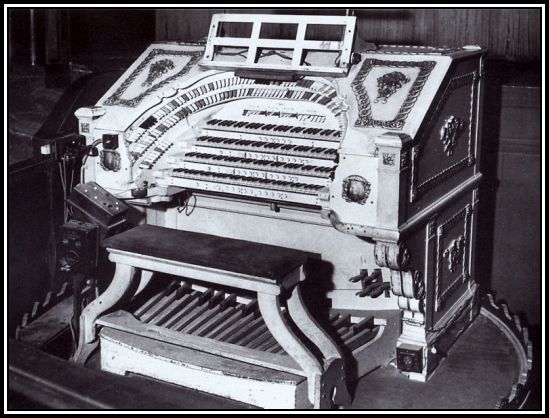 The Console of the Empire Leicester Square Wurlitzer Organ sitting on its turntable
The Console of the Empire Leicester Square Wurlitzer Organ sitting on its turntable
The Console was mounted on a turntable at the left end of the Orchestra Pit and was opened in November 1928 by the organists, Reginald Foort (1893-1980) and Sandy MacPherson (1897-1975) who was the resident organist at the Theatre from 1928 until 1938.
Over the years, those organists who were fortunate enough to play this instrument became enamored with the glorious sounds that it produced, and the Organ soon gained, with affection, the name of The Empress.
(Note: The name of Empress is not universally accepted by all Theatre Organ enthusiasts, since some prefer to reserve the name for the 3-manuals/13-ranks Organ installed at the Empress Ballroom, Blackpool in 1935 and subsequently acquired by the BBC in 1969.)
-oOo-
While drawing up plans for the reconstruction of the interior of the Theatre and its conversion into a new cinema and Mecca Dance Hall, the new owners saw no place for the Theatre Organ other than its removal and disposal.
-oOo-
PLANNING A FAREWELL CONCERT
TO BID ADIEU TO THE EMPRESS
-oOo-
Len was still working as a Junior Clerk at The Royal Insurance Company in the City of London when he read in one of the daily newspapers that the Empire Theatre Leicester Square would soon close and undergo major changes.
Len had visited the Empire Theatre on several occasions and heard the Organ played and been very impressed with its sound. He had often discussed the possibility of holding a Society-sponsored concert at the Theatre with Mr. Ralph Bartlett who was the Organiser and Secretary of the Theatre Organ Society (TOC) at the time. Mr. Bartlett had generally dismissed any such possibility stating the importance of the Theatre as his reason since it was in constant use as a Flagship Cinema to advertise the latest MGM Productions and often used for special Première events, such as the Royal Film Command Performance.
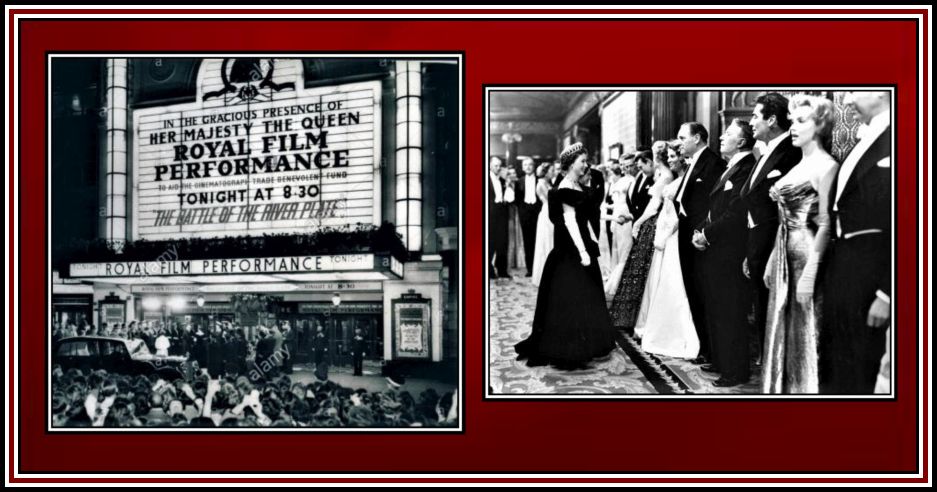 The Queen at the Empire Theatre for the 1956 Royal Film Command Performance
The Queen at the Empire Theatre for the 1956 Royal Film Command Performance
-oOo-
Once Len learned that the Theatre was about to close, he broached the subject of holding a concert there to Mr. Bartlett once more. Len felt that it would be important for members to hear this special Organ played one more time, but again, his suggestion was met with little enthusiasm.
Not daunted, Len eventually decided to telephone the Theatre and ask to speak to the General Manager, Mr. Albert Sidi. Once he was put through, and had introduced himself, he asked what the management planned to do with the Organ following its removal. He learned that the plan was to sell it. Len then told the Manager that he was a member of the TOC and asked it they might have permission to sponsor a final concert at the Theatre before this happened. To his surprise, he was told that this would indeed be possible. As a result, plans for the concert went ahead and Messers. Jackie Brown (1923-1974) and George Blackmore (1921-1994) were invited to play.
 Jackie Brown
Jackie Brown
Jackie Brown playing his own composition, March of the Organist
-oOo-
Len had gained permission to record the concert, and while he was setting up his equipment in the Circle of the Theatre, Mr. Bartlett called up to him from the stage to ask if he would like to come down and play the Organ! Naturally Len was ecstatic at the thought of playing this glorious instrument. Until that time, Len had never played such an Organ being only used to the likes of the Wurlitzer Theatre Organs of the Ritz (ABC) Cinema Aldershot (3-manual; 7-ranks) and the Granada Theatre Wandsworth (3 Manuals and 8 Ranks).
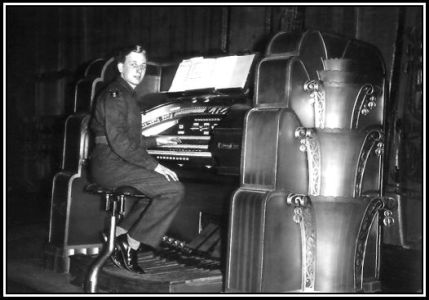 Len seated at the Wurlitzer Theatre Organ of the Ritz (ABC) Cinema Aldershot during his Army Years
Len seated at the Wurlitzer Theatre Organ of the Ritz (ABC) Cinema Aldershot during his Army Years
-oOo-
 Len Rawle seated at The Wurlitzer Theatre Organ of The Empire Leicester Square
Len Rawle seated at The Wurlitzer Theatre Organ of The Empire Leicester Square
prior to the Farewell Concert
Len says that sitting at the Console of The Empress was like nothing he had experienced in the past. He remembers gazing at the manuals and stops and noting the large number of stops positioned around the manuals, many, he says, that he was unfamiliar with at that time. As a result, he decided to stick with those stops that he knew from playing the Wurlitzer Theatre Organ of the Ritz (ABC) Cinema Aldershot .
Len added that although the Console looked somewhat the worse for wear at that time, once he sat down and engaged the stops and then the keys, he was amazed at the lush and beautiful sounds that emanated around him from the Organ.
Len played The Empress for about fifteen minutes while members of the TOC entered the Theatre for the Farewell Concert. He said that the sounds were like nothing he had experienced in the past and likened this Organ to a Rolls-Royce compared with other organs that he had played. He remembers while seated at the Console, he fell in love with the Organ’s glorious sound, and, there and then, decided that he had to do everything within his power to save it.
-oOo-
A BID & A PROMISE
-oOo-
Once the Concert ended Len could not wait to get home to discuss with his father how the Organ could be saved. Len’s father was very much in favour of trying to save the instrument and said that they would find a way to store it at Wurlitzer Lodge, which would prove to be a mammoth task, but one which the Rawle family planned to overcome! Firstly, Len thought about offering a bid to purchase the Organ, but sadly, although the Spirit and the Heart were willing, the bank account was weak!
Len had learned that there were only seven weeks left before the Theatre was to close, which was not long in order to plan the removal of The Empress.
The first thing that Len had to do was to find out what the new Theatre owners planned to do with the Organ. Len telephoned Mr. Sidi, the Manager of The Empire, and made an appointment to discuss the fate of the Organ. Mr. Sidi said that the new owners had already received high-end offers from two Organ Builders and another from a Scrap Metal Merchant.
Mr. Sidi asked Len what were his plans for the Organ, should his bid prove successful. He was very impressed when he learned that Len and his family planned to preserve it for others, both now and in the future, to enjoy its glorious sounds. Mr. Sidi said that he and others at the Theatre had an affection for the Organ since, in his own words, it had done them proud!
After a minute or so, Mr. Sidi next asked Len to make him a promise that should he be allowed to take charge of The Empress then he would indeed preserve it. Len said that he would be happy to give him his word and that he would do his very best to fulfill the promise. Apparently Mr. Sidi nodded and told Len that he would be hearing from him soon regarding the Organ’s fate.
True to his word, two days later a letter was delivered from Mr. Sidi to Len informing him that he could have the Organ! However, the letter also stated that, as a result of the tight schedule for the conversion of the Theatre into a smaller Theatre and Dance Hall, Len would have only a mere three weeks to oversee its removal from the premises! The letter also informed Len that should any part of the Organ remain following this time, he would be subject to a ten thousand pound fee levied by the new owners!
-oOo-
Three weeks – twenty-one days! This was not a long period of time given to Len, his father and a group of friends and various organ-lovers to remove the numerous Organ Pipes plus the wide range of accoutrements that went to make up The Empress! However, as the proverb says: Where there’s a will, there’s a way!
-oOo-
ALL HANDS ON DECK
-oOo-
Before agreeing to remove the Organ within the three-week time period, Len and his father thought it prudent to learn exactly where the Organ Pipes were housed in order to get some idea of how best to extract them. And so they made arrangements to go to the Theatre one evening soon following the completion of the film presentation. At the appointed time, they were met by Mr. Sidi who introduced them to one of the house engineers who was to give them a tour, although this gentleman had to admit that he was not completely sure where all of the various parts lay!
Up until that time, Len and his father were used to a few Ranks tucked away under a stage and certainly had no idea what lay in store for them. They soon got a taste of things to come when Len found himself climbing up over thirty rungs of an iron ladder at one side of the stage and then scrambling through a trap door where he found the Main Chamber!
Len remembers the dust that flew everywhere when he opened the trap door and the shock he felt at looking up at the longest wood Diaphone Pipe that he had seen up until that time. Following this sight, they wondered how they would get these Pipes out of the Chamber and soon realised that this could only be achieved by getting them out the same way they were introduced ……. and this was through the trap door! That evening they did not view the Blower, which they had learned was either two floors down, under the stage, in the coal cellar or with the Relays, which were up in the roof trusses alongside the Dome of the ceiling!
-oOo-
Once they had signed the agreement to remove the Organ, Len and his father set about mobilising anyone and everyone that they could think of who might be willing to help them to do the impossible and remove the Organ within the allotted time.
Those harnessed in the task included Mr. Derek Batten who was employed by The John Compton Organ Company Limited and Mr. Bill Sellars who had tuned and maintained The Empress in the past and who had taken on the job of tuning the Theatre Organ installed at Wurlitzer Lodge at the time. Mr. Sellars was to prove especially helpful since he offered to supervise the removal of the Relays, which he said would prove to be the most difficult and delicate part of the Organ’s removal in the time given. Len is also grateful to neighbours and friends who brought together a fleet of vehicles to carry the extracted parts of the Organ and transport them to Wurlitzer Lodge for storage.
 Len’s Morris 1000 shown here transporting a piece of Main Wind Trunking from under the stage, which came off The Blower and directed the wind supply to each side of the building and then upwards to the Chambers. Mrs. Edith Rawle and Mr. Sam Burge are shown in the photograph.
Len’s Morris 1000 shown here transporting a piece of Main Wind Trunking from under the stage, which came off The Blower and directed the wind supply to each side of the building and then upwards to the Chambers. Mrs. Edith Rawle and Mr. Sam Burge are shown in the photograph.
-oOo-
Assembling the team together took seven of the twenty-one days available to the Rawle Family, thereby leaving them a mere fourteen days to achieve the impossible!
-oOo-
NOW IS THE TIME FOR ALL GOOD MEN
TO GIVE THEIR AID TO THE PARTY
-oOo-
To say that the following fourteen days were not hectic, would be an understatement! It was only after Len and his father and assorted helpers started the removal process that they began to fully appreciate the scale of the process and learn exactly where the numerous components were for many were tucked away around the Auditorium and even above the the ceiling!
In order to remove the various components of the Organ within the deadline of thirty-three days, Len realised that a strict organisational approach was necessary to achieve this aim. As a result, Len, as leader, arranged his friends, family and enthusiasts into teams and these were each charged with attempting to empty the various Organ Chambers along with the Relays, Blower and Console at the same time. In this way, Len believed that they would have the Theatre free of the Organ in the required period of time.
-oOo-
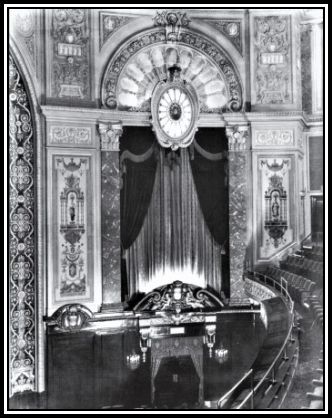 The Main Chamber is behind the drapes of the Faux Box to the right of The Proscenium Arch
The Main Chamber is behind the drapes of the Faux Box to the right of The Proscenium Arch
From the Tony Moss Archive from the Cinema Organ Society
Len and his father organised the emptying the Main Chamber first. Fortunately, this was a tall Chamber since it had been built to accommodate full length Diaphones and sixteen-feet Gamba Pipes. They managed to achieve this by passing the contents of the Chamber not through the trap door in the floor, but through the Swell Shutters, which were found high up on the right-hand side of the Proscenium Arch. Since there were no staircases or lifts available to them, rope and pulley (tackle) had to serve in the removal process together with plenty of manpower to steady the heavier components.
Once a component was taken out of the Chamber, it was next gingerly moved across some wooden planks (without handrails!), and steadied only by volunteers, over to the Circle and then cautiously lowered down to the Stalls by means of a rope and pulley. Len said that prior to embarking on this process, they had had some discussion with the engineer in charge of the demolition process at the Theatre as to where best to anchor the device, which would be high up among the roof trusses.
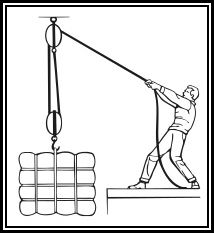 Rope and Pulley (Tackle)
Rope and Pulley (Tackle)
From the Stalls, the component was next moved over to the Stage where it had to be hoisted up some twenty feet in order to bring it to street level. Once here, the component was moved through the exit to a side street and into a waiting vehicle. Len says that moving each component was a formidable task and required a great deal of effort, time and care.

-oOo-
Once the Main Chamber was well on its way to being emptied of its components, they removed the Console followed by the Blower from the coal cellar, found two floors down from under the stage, and then next turned their attention to the removal of the Relay Stacks.
 The Blower of The Skinner Player Pipe Organ of Brucemore – Built in 1929 and Preserved in 2018
The Blower of The Skinner Player Pipe Organ of Brucemore – Built in 1929 and Preserved in 2018
-oOo-
Removal of the four extremely heavy Relay Stacks out of the building was to prove to be the most problematic and the most hazardous part of the removal process. The Relays were housed in a small brick room (12 feet by 10 feet) that had been built around them following their original installation, and was found high up under the roof over the Circle, close to the decorative Dome of the Auditorium. Len and Mr. Sellars had taken on the chore of their removal and both thought long and hard about how best to achieve their aim and avoid their crashing down into the Auditorium.
 View of The Dome and The Circle
View of The Dome and The Circle
From the Tony Moss Archive from the Cinema Organ Society
The Arrow shows, approximately, where a hole was made for the removal of the Relay Stacks
The entrance to the brick room was very small and certainly was not where the Relays entered the area. The room had no lights and so lamps and torches were the only lighting that they had to examine the area. As luck would have it, they noticed that the bricks of one wall inside the room were slightly different to those of the others. They realised that the Relays must have been eased into their space before this wall was put into place. They decided to remove a few of these bricks in order to see where exactly they were in regard to the Auditorium. After the removal of more bricks to make a six-foot diameter hole in the wall, they found that the hole was positioned in a suitable part of the Auditorium wall that was to allow them to bring each Relay out and lower it to the Circle area and eventually to the stalls and then over the Orchestra Rail (which allows the separation of the Orchestra from the audience) and into the Orchestra Pit and next up onto the Stage, with its steep Rake, and finally to the outside to the waiting lorry.
 An Example of a Simple Relay Stack
An Example of a Simple Relay Stack
It can not be emphasised enough that the removal of each Relay Stack was a dangerous operation both to the volunteers and to the component and required some skillful manipulation of the Relay, which had been securely bound with a rope that was linked to a pulley anchored to a roof truss. Slowly but surely, the bound Relay was eased out of its space high above the Auditorium and then down to the Circle, and onward, until it was eventually safely secured onto the lorry.
-oOo-

Remembering the removal of the Relay Stacks almost sixty years after the event, Len recalls that the actual extraction took he and Mr. Bill Sellars a week to achieve! Although they actually felt fine while hidden away high up in the ceiling area close to the Dome, they were well aware that some frightening times lay ahead of them once the extraction process began!
The first frightening experience came once they knocked through the hollow brickwork that Len had spotted in the little room housing the Relay Stacks. He remembers waiting patiently to hear the dislodged bricks crash on the floor of the stalls. He said that this seemed to take an age!
The second fright soon followed as they made their way down to the stalls to inspect the damage that the bricks had done and the route that they had taken. He remembers that it seemed an awful long way down from the hole to the Auditorium and he was concerned that the distance might prove too great for their simple block and tackle to tolerate the weight of the Ralay Stacks. They were terrified that while lowering the first Stack down, it might come crashing to the ground and be smashed beyond repair!
Once the entire brickwork had been knocked through, it felt like we were standing on the topmost diving platform at a swimming pool! Although this was terrifying, the worst was yet to come!
Our lifting tackle was fixed to the only suitable beam above the ceiling and this was some twelve feet out into the auditorium. We therefore had to draw the chains into our diving board position and lash them to the supremely heavy sections of one of the four Relay Stacks to be lowered to the ground. Each Stack was anchored to ultra strong Wurlitzer tuning passage boards, and when fully secured, was inched along towards the opening into the Auditorium.
Wurlitzer passage boards were of wood and used to form part of the walkways within a Pipe Chamber. They allowed safe passage for the Organ Tuner to access the majority of pipes and regularly tune and occasionally clean them. These boards were approximately eight feet long and roughly ten inches wide and one-and-a-quarter inches thick. As with all Wurlitzer timber, the boards were of extremely high quality American White Pine with a close grain and totally without knots. This wood is supremely strong and so was used to help move heavy items such as the Relay Stacks, the blower and The Console, which weighted at least one ton.
Each Relay Stack was pushed out into the open space until they reached the balance point. Then, we tipped up the Relay Stack and allowed it to slide and then swing out into the Auditorium while holding our collective breaths! Finally, we began the slightly less fraught task of lowering it down with the aid of the block and tackle!
Len says that thanks to these maneuvers, he now knows what it feels like to have one’s heart in one’s mouth!

-oOo-
Once the Relay Stacks were safely out of the building, Len and his colleagues turned their attention to emptying the Pipes present in the Solo Chamber. This Chamber was present on the left-hand side of the Proscenium Arch, but had been placed much higher than the Main Chamber. Len says that although higher up, emptying Solo Chamber of its ten Ranks of Pipes proved not to be as hazardous as that of the Main Chamber. What did prove to be problematic with the Solo Chamber was its size: it was small and did not have the height found with the Main Chamber and they wondered how they were going to remove the larger Pipes at the back of the Chamber.
 View of the left side of The Auditorium
View of the left side of The Auditorium
From the Tony Moss Archive from the Cinema Organ Society
The Solo Chamber is behind the drapes of the Faux-Box
The arrow shows where sound from The Chamber came through the plaster work above the drapes
After removing some of the Pipes at the front of the Chamber, they noticed that there was a door on the back wall. When this was opened, they found that it opened onto the street running behind the Theatre. As a result of this find, they were able to pass the larger Pipes through the door and then lower them down into the street and on to the waiting lorry.
-oOo-
BY THE SKIN OF THEIR TEETH
-oOo-

Len says that with about two hours left to spare on the last day granted him, the final components of the Wurlitzer Theatre Organ of the Empire Theatre Leicester Square, which included the Marimba, were removed. Len says that there was no one other than he and his teams present to note The End of an Era.
-oOo-
Len says that the removal process would not have been achieved without help from a large group of people: Mr. Bill Sellars took two weeks absence from his workplace in order to be at the Theatre every day and who was essential to the successful removal of the Relay Stacks; Len’s father, Les Rawle, worked at his Grocery Store during the day, but came to the Theatre every day after it closed in order to help with the removal; and Mr. Derek Batten of The John Compton Organ Company Limited. Other volunteers, friends and family members gave of their time when possible. Len was working at the Royal Insurance Company at the time of the removal, and during the first week, he and the others, arrived at the Theatre at 10 P.M. each night and worked until 2 A.M. After that Len took a one-week leave from his work in order to concentrate fully on the removal process.
-oOo-
Without doubt, what Len and his teams were able to do was an amazing and a remarkable achievement and they deserve our praise and thanks for saving such a magnificent instrument for future generations to enjoy.
Unfortunately, no one brought a camera to the Theatre to record the removal of the Organ. Anyway, I am sure that they were far too busy getting the components out before the wrecking ball arrived! Len says that had anyone taken photographs, all they would have shown were a bunch of men looking like coal miners just coming out of a filthy mine!
-oOo-
Within a few short hours of their leaving the Theatre, others would be entering the Theatre to remove the remainder of the glorious plaster work of the Auditorium and begin the conversion process of the building and make ready for a new public.
—oooOooo—
I would like to thank Mr. John Lemming for providing copies of the photographs of the interior of the Empire Theatre Leicester Square (from the Tony Moss Archive from the Cinema Organ Society).
—oooOooo—
